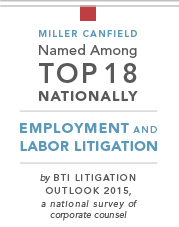
|
||||
| DOL Issues New Guidance Regarding the Misclassification of Employees as Independent Contractors | July 15, 2015 | |||
|
On July 15, 2015, David Weil, the Administrator for the U.S. Department of Labor (DOL), Wage and Hour Division, issued an Administrator’s Interpretation aimed at addressing the misclassification of employees as independent contractors. According to Administrator Weil, most workers qualify as employees under the Fair Labor Standards Act (FLSA) given the statute’s expansive definition of employment. Whereas a worker genuinely in business for himself or herself is properly classified as an independent contractor, a worker that is economically dependent on the employer is an employee covered by the FLSA. In making this determination, the DOL will consider six “economic realities factors,” in the context of the FLSA’s broad definition of “employ,” meaning “to suffer or permit to work.” The economic realities factors include:
A determination that a worker was misclassified as an independent contractor could have significant economic impact on an employer. For instance, the employer might be liable for minimum wage, overtime compensation, employment withholding taxes, unemployment insurance, providing health insurance coverage, and worker’s compensation. In addition, the worker might be entitled to statutory workplace protections, such as state and federal civil rights law prohibiting workplace discrimination, harassment and retaliation. The Administrator’s Interpretation is the first of what are likely to be many administrator interpretations emanating from the DOL based on the U.S. Supreme Court’s ruling in March 2015, holding that federal agencies can make significant changes to rules interpreting regulations without engaging in notice-and-comment procedures. It is also the latest move by the DOL to heighten enforcement and expand overtime protections to workers. As we previously reported just two weeks ago, the DOL announced a proposed rule that would broaden federal overtime pay regulations and double the minimum salary threshold required to qualify for a “while collar” exemption under the FLSA. The proposed regulations were published in the Federal Register on July 6, 2015. Accordingly, public comments are due no later than September 4, 2015. Given the recent developments at the DOL, employers should revisit how they are classifying their workers. Misclassification actions, by the DOL and employees, will only continue and are likely to increase in the near future. Addressing the classification of workers now may help avoid costly and protracted legal action in the future. Please feel free to contact your Miller Canfield FLSA expert if you need any assistance submitting comments regarding the proposed regulations, if you have questions regarding the classification of your workers or if you otherwise need any assistance. |
Contact
Michael Alaimo
Christopher Trebilcock Upcoming Seminars & EventsRecognitions
The designated law firm for Michigan and Poland |
|||
Resources |
||||
|
Subscribe | Unsubscribe
Follow Us:
|
||||
This message is for general information only and should not be used as a basis for specific action without obtaining further legal advice. |
||||




